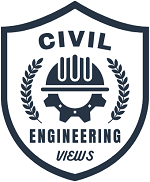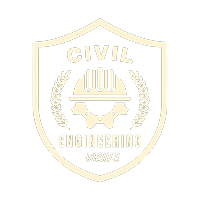Introduction to Offshore Hydrographic Surveying
Offshore hydrographic surveying is a specialized field that plays a critical role in various maritime industries. It involves the comprehensive mapping of seabeds and underwater features, providing crucial data that informs decision-making processes across sectors such as oil and gas exploration, marine construction, and environmental monitoring. The primary objective of offshore hydrographic surveying is to ensure safe navigation, optimize resource extraction, and support the sustainable management of marine environments.
Hydrographic surveys gather a wealth of information about underwater terrain, including depth measurements, physical features, and the composition of the seabed. Advanced technologies are employed to conduct these surveys, including multibeam and single-beam echo sounders, side-scan sonar, and remotely operated vehicles (ROVs). These sophisticated tools allow hydrographers to create detailed bathymetric charts – essential for marine operations.
In the context of the oil and gas industry, accurate hydrographic data is indispensable. It enables the identification of suitable drilling locations and the construction of offshore platforms and pipelines. Such surveys also play a vital role in assessing environmental impact, thereby guiding compliance with environmental regulations. Similarly, in marine construction, the data facilitates the planning and execution of projects like bridge constructions, port developments, and underwater cabling.
Environmental monitoring is another critical aspect where offshore hydrographic surveys prove invaluable. By mapping underwater habitats and identifying changes in seabed morphology, these surveys contribute to the conservation of marine ecosystems. Organizations tasked with marine conservation utilize this data to monitor the health of coral reefs, study aquatic life, and understand the impacts of human activities on marine environments.
Thus, offshore hydrographic surveying forms the backbone of various maritime activities, ensuring that industries can operate efficiently while safeguarding the marine ecosystem. As technology advances, the precision and scope of hydrographic surveys will continue to expand, further enhancing their significance in both commercial and environmental contexts.
Necessary Qualifications and Certifications
Starting a career in offshore hydrographic surveying requires a combination of formal education and specific certifications to ensure competency and adherence to industry standards. A solid foundation begins with an educational background in fields such as marine science, oceanography, civil engineering, or geospatial sciences. These disciplines provide essential knowledge in areas like marine geology, hydrodynamics, and data interpretation, which are critical for effective hydrographic surveying.
Pursuing advanced degrees can further enhance one’s expertise and potential within the field. For instance, a master’s or doctoral degree in hydrography or related specialties can provide deeper insights and open doors to more advanced and specialized roles. However, educational qualifications alone are not sufficient to embark on a professional offshore hydrographic surveying career.
Obtaining specific certifications from recognized bodies is crucial to establishing credibility and showcasing competence. The International Hydrographic Organization (IHO) sets global standards for hydrographic surveying and provides certification programs that are widely recognized in the industry. Certification from IHO not only validates technical proficiency but also assures employers and clients of adherence to the highest standards of practice.
Besides IHO certification, other significant certifications include those from the Hydrographic Society, which offers different levels of professional recognition based on experience and knowledge. Practical training is also highly valued; participating in accredited courses and hands-on training programs can significantly enhance one’s skills and readiness for fieldwork. It is important for aspiring hydrographic surveyors to remain updated with the latest technological advancements and best practices through continuous professional development and qualification renewal as required.
The combination of a robust educational background and internationally recognized certifications forms the cornerstone for success in offshore hydrographic surveying. These credentials ensure that individuals are well-prepared to meet the challenges of the field, maintain professional standards, and contribute valuable insights through their work.
Required Equipment and Technology
Conducting an offshore hydrographic survey necessitates the utilization of various specialized equipment and advanced technology to ensure the accuracy and comprehensiveness of the data collected. Key among these are echo sounders. Both multibeam and singlebeam echo sounders are integral to the survey process. Multibeam echo sounders provide a more detailed picture of the seabed by using multiple beams to map areas simultaneously, which is essential for high-resolution seafloor mapping. On the other hand, singlebeam echo sounders, while simpler, are effective in collecting depth data along a single line, making them useful in certain conditions and complementary to their multibeam counterparts.
Another crucial piece of technology in hydrographic surveys is the side-scan sonar. This equipment is adept at creating images of the seafloor by emitting sound pulses that are reflected back to the equipment from the seabed. The resulting images help in identifying submerged objects and understanding the texture and composition of the ocean floor, vital in tasks like underwater archaeology and detecting hazards to navigation.
Accurate positioning is also paramount in offshore hydrographic surveys, necessitating the use of advanced GPS systems. Reliable GPS technologies, augmented with Real-Time Kinematic (RTK) corrections, can offer centimetre-level accuracy, imperative for ensuring that data points are precisely logged. This accuracy is critical in establishing the exact locations of surveyed features and maintaining the integrity of the collected data over large areas.
The significance of deploying state-of-the-art equipment cannot be overstated. High-quality, reliable instruments ensure the precision of data collection, reduce the margin of error, and enhance the overall efficiency of the survey operations. Up-to-date technology also often includes features that streamline operations, such as automated data processing and real-time data analytics, which are invaluable for making informed decisions on-site. Thus, investing in robust and advanced hydrographic survey technology not only guarantees accurate data but also optimizes the overall survey process.
Planning and Preparation
To initiate an offshore hydrographic survey successfully, the first critical step is meticulous planning and preparation. This phase comprises several interrelated tasks that lay the groundwork for effective execution. One of the primary activities involves selecting an appropriate site for the survey. Site selection must be conducted with a thorough understanding of the project’s objectives, the surveyed area’s geographical characteristics, and the specific conditions and requirements that might influence the survey’s outcomes.
Equally important is gaining a comprehensive understanding of environmental conditions at the chosen site. This encompasses both physical and biological factors, such as tides, currents, sea state, weather patterns, and potential marine life activity. Acquiring detailed and actionable environmental data helps in devising accurate survey plans that anticipate and mitigate possible hindrances. It is crucial to use reliable historical data and, if necessary, perform preliminary reconnaissance to validate current environmental conditions.
Obtaining the necessary permits and licenses is another essential step in the planning phase. Regulatory compliance ensures that the survey adheres to local, national, and international maritime laws and environmental protection regulations. Permits may include those related to marine operations, environmental impact assessments, and coastal zone management. Early engagement with relevant authorities and thorough documentation can help streamline this process and avoid any legal or procedural delays.
Finally, effective coordination with stakeholders cannot be overstated. Engaging all relevant parties, including government agencies, local communities, conservation groups, and commercial entities, is crucial for the survey’s smooth progression. Establishing clear channels of communication ensures transparency, fosters collaboration, and helps preempt potential conflicts of interest. Stakeholder coordination also aids in securing local support and resources that can be pivotal for the survey’s logistical and operational aspects.
In summary, thorough planning and preparation form the bedrock of a successful offshore hydrographic survey. Attention to these preparatory steps helps create a cohesive strategy, reduces risks, and enhances the overall accuracy and efficiency of the survey operations.
Data Collection Techniques
Hydrographic surveying employs a variety of data collection techniques to gather accurate and comprehensive information about aquatic environments. These methods are critical for understanding water depth, seafloor topography, and the presence of underwater obstructions. Each technique has unique benefits and applications, tailored to specific survey needs.
One of the primary techniques used in hydrographic surveying is echo sounding. This method involves the transmission of sound waves from a vessel’s sonar system into the water. The sound waves reflect off the seafloor and return to the sonar receiver. By measuring the time it takes for the sound waves to return, the water depth can be accurately determined. Echo sounding is further divided into single-beam and multi-beam sonar systems. Single-beam sonar measures depth directly beneath the vessel, while multi-beam sonar provides a wide swath of data, offering detailed topographic maps of the seabed.
Another essential technique is Light Detection and Ranging (LiDAR). This remote sensing method uses laser pulses from an aircraft to measure distances to the seafloor. LiDAR is particularly advantageous in shallow water regions, where traditional sonar systems may struggle to produce accurate readings. By leveraging LiDAR data, hydrographers can create precise models of coastal and shoreline areas that are critical for navigation and coastal management.
Sub-bottom profiling complements these methods by using low-frequency sound waves to penetrate the seabed layers. This technique is indispensable for detecting and mapping sub-surface features, such as sediment layers or buried objects. It is particularly useful for geological studies and identifying potential hazards to marine construction projects.
When conducting offshore hydrographic surveys, the integration of these data collection techniques is crucial. Best practices include calibrating instruments regularly, maintaining proper vessel positioning, and performing systematic data verification to ensure accuracy. Employing an appropriate mix of technologies and adhering to meticulous survey procedures results in reliable and actionable data, supporting safe navigation, resource exploration, and environmental monitoring.
Data Processing and Quality Control
Data processing and quality control form integral components of an offshore hydrographic survey. The initial stage involves the transformation of raw survey data into actionable insights. The key methodologies employed encompass the collection, cleaning, and analysis of data amassed via hydrographic instruments. These processes facilitate the generation of accurate maps, charts, and spatial information, essential for myriad maritime activities.
Commencing with the collection phase, the raw data captured by echo sounders, sonar systems, and other hydrographic devices undergoes a rigorous preprocessing stage. This includes the removal of noise and errors such as those caused by vessel motion or environmental interferences. Specialized software applications often aid in this phase, providing a preliminary framework to manage the extensive datasets efficiently.
Subsequently, the focus shifts to data correction and calibration. The application of tidal corrections, sound velocity adjustments, and alignment with geodetic coordinates are pivotal steps. These adjustments ensure the data’s conformity to standardized spatial references, thereby enhancing its comparability and interoperability with existing datasets.
Quality control mechanisms are imperative throughout the data processing continuum. Implementation of stringent quality assurance protocols entails the utilization of redundant systems and cross-validation techniques to affirm the fidelity of survey outputs. Peer reviews and compliance with internationally recognized standards, such as those established by the International Hydrographic Organization (IHO), serve as benchmarks for the reliability of hydrographic data.
The final phase culminates in the transformation of processed data into user-friendly formats. Visualization tools generate detailed bathymetric maps, contour plots, and 3D models, which are integral for navigation, construction, and environmental monitoring tasks. Consistent verification processes, including feedback loops and iterative refinements, ensure the sustained accuracy and usefulness of the data throughout its lifecycle.
In compiling and presenting the results of an offshore hydrographic survey, several key steps must be meticulously followed to ensure that the data is conveyed clearly and concisely. This involves the creation of comprehensive charts, detailed maps, and thorough reports, all of which are essential in effectively communicating the findings to clients or stakeholders.
Charts and Maps
The development of accurate charts and maps is paramount in any hydrographic survey. These visual documents serve as the primary representation of the surveyed area, providing a clear and precise depiction of seabed topography, underwater obstructions, and other critical features. Utilizing advanced Geographic Information System (GIS) technology and hydrographic software ensures that the data is rendered accurately. Each chart and map should be meticulously checked for errors and verified against raw data to maintain a high standard of precision.
Report Creation
In addition to visual deliverables, the compilation of a detailed report is essential. This report acts as a narrative that explains the methodologies employed, the analyses conducted, and the consequent findings. It should begin with an executive summary that provides a high-level overview of the survey’s objectives, scope, and key outcomes. Following this, a methodology section should outline the techniques and equipment used during the survey, offering transparency and reproducibility. Results and findings should be presented in a clear, structured manner, supported by tables, figures, and charts where appropriate. Interpretation of the data and any subsequent recommendations should be articulated with precision, aligning closely with the client’s objectives and needs.
Presentation and Review
The final stage involves the presentation of these deliverables to stakeholders. Ensuring that the presentation is both professional and accessible is crucial. This can be achieved through the use of clear visuals, logical structure, and straightforward language. Stakeholders should be given the opportunity to review the deliverables and provide feedback, facilitating a collaborative approach that may necessitate revisions to ensure that all stakeholder concerns and requirements are adequately addressed.
Challenges and Safety Considerations
Embarking on an offshore hydrographic survey involves navigating multiple challenges that can significantly impact the success and safety of the mission. One of the primary challenges is coping with harsh weather conditions, which can be unpredictable and severe. Strong winds, high waves, and sudden storms can not only jeopardize the accuracy of the survey data but also pose serious risks to the survey team and equipment. Hence, meticulous planning and constant weather monitoring are crucial components of any offshore hydrographic survey.
Equipment malfunctions represent another critical challenge. The sophisticated instruments used in hydrographic surveying, such as multibeam echo sounders and side-scan sonars, are susceptible to mechanical and electronic failures. These unexpected issues can lead to significant delays and additional costs. Regular maintenance and thorough pre-survey equipment checks are essential to minimize the risk of malfunctions during the survey operations.
Logistical issues also play a significant role in complicating offshore surveys. Coordinating the transport of personnel, equipment, and supplies to remote offshore locations requires careful planning and execution. The complexity of logistics is exacerbated by the need for specialized vessels and the potential for limited access to repair and resupply points. Efficient logistical planning and the establishment of contingency plans are fundamental to mitigating these challenges.
Safety considerations are paramount in offshore hydrographic surveys. Ensuring the protection of the team and equipment requires the implementation of robust safety measures and protocols. This includes providing comprehensive training for personnel in emergency response procedures, ensuring the availability of personal protective equipment, and conducting regular safety drills. Adherence to international safety standards and guidelines is vital to safeguarding both human and material resources throughout the survey process.
Overall, recognizing and addressing these challenges through proactive planning and stringent safety practices is essential for the successful and secure execution of offshore hydrographic surveys.











